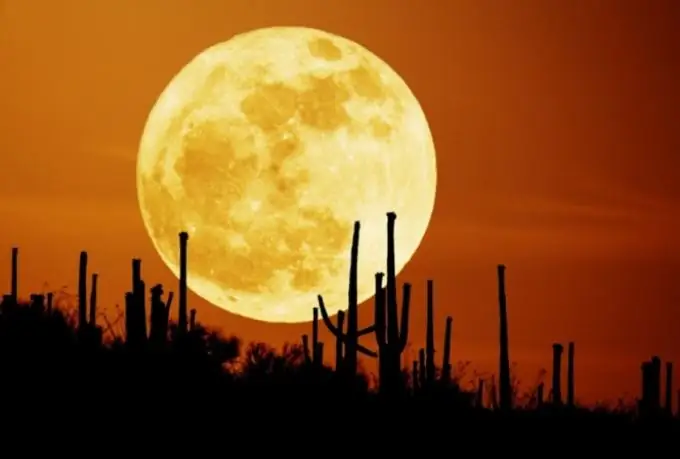One of the simplest objects for astrophotography is the Moon. Unlike pictures of stars and nebulae, it is possible to photograph a natural satellite of our planet even in a city.
Even if you are not interested in astronomy, a photo of the moon can diversify your photo collection.

Instructions
Step 1
Choosing the time
You can take pictures of the moon at any time of the day. But the most difficult and at the same time spectacular option is night. Therefore, this is what we will consider.
So, we are waiting for the right night and weather. The sky does not have to be cloudless - sometimes clouds add atmosphere to the photo. So the only completely inappropriate option is a sky completely overcast.
Step 2
Choosing a site
It is important for us that the lights do not light up the frame, which means we need to find a place where they are not, or just go higher - the residents of high floors are lucky here. Although, even the second or third floor is enough.
Step 3
Installing the camera
The camera should not shake when taking pictures. Of course, you can often get a good shot of the Moon "from hand", but it is better to fix the camera. A tripod is ideal, but if you don't have one, you can use books, clothing, and whatever else is close at hand that you find suitable for fixing the camera at an angle to the horizon.
Step 4
Getting rid of the shaking when you release the shutter
We just set a timer or use the control panel. In addition, some cameras have a smartphone or laptop control function.
Step 5
Camera setup
We put the camera in manual mode, turn off the flash, focus to infinity, close the aperture, set ISO to about 100-200, shutter speed - about 1/60 - 1/100. I do not recommend setting the shutter speed lower, because the moon moves across the sky and with a longer shutter speed you will lose the sharpness of the picture and you can get just a white oval instead of the moon image (or some other elongated white figure, depending on the phase of the moon). With ISO and aperture you can play around and find the most suitable values for your camera. But remember that when the aperture is open, sharpness is lost, and noise appears at high ISO.






